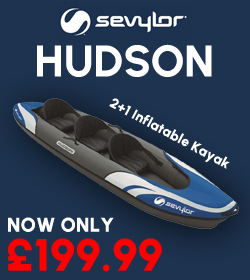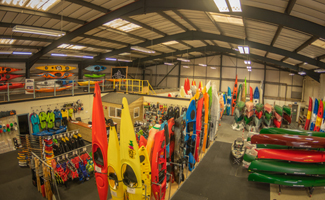If you cannot find the information that you need below, please call us on 01925 818437 or use the form on our contact page, and we will try to assist you further.
Minn Kota Electric Outboard Motors
Frequently Asked Questions
Can Minn Kota electric motors be used in saltwater?
There is a Minn Kota electric motor specifically designed for use in salt or brackish water: The Minn Kota® Riptide®. It has a several features specifically for saltwater, such as stainless steel hardware, sealed electrical connections and an advanced painting process that gives improved protection against corrosion. Using other Minn Kota motors in saltwater will dramatically reduce their life-span, and voids the manufacturer's warranty.
What shaft length do I need?
It is important to choose the correct shaft length to avoid cavitation (creation of vacuum bubbles), which can eventually damage your motor and will also scare fish away. As a rule of thumb, the centre of the propeller section should be submerged 9". Minn Kota®'s standard shaft lengths should be suitable, since most boat transoms are a similar distance from the water. To find the right shaft length for you, follow these instructions:
- Measure the distance from the mounting surface to the waterline
- Add 5" to this measurement if you intend to fish in rough water
- Add 12" if you intend to stand
- Use this adjusted measurement and the tables below to find the appropriate shaft length for your needs
Shaft Length Guide  |
|
Distance of transom from waterline
0" - 10" |
Recommended shaft length
|
What kind of battery should I use?
Using the right battery is critical for your electric motor. You should always use a high-quality deep-cycle marine battery. For best performance, you should keep you battery topped up after every use, but also periodically allow it to reach a fully discharged state and do a full recharge from there.
What is Amp Draw?
Amp draw is the measurement of electrical current drawn from a battery (or batteries), while the motor is in use. Approximate running time when operating a motor at full power can be calculated using a motor's amp draw and the battery's amp hour rating.
For example: a single 120-amp-hour, 12-volt battery and a 12-volt motor drawing 30 amps at the highest speed setting will run for approximately 3.4 hours.
As the speed is reduced, the amp draw is also reduced. A motor drawing 30 amps at high speed may only draw 5 amps at the slowest speed. A motor that will theoretically run for about 3.4 hours at high speed may run for over 20 hours at the slowest speed.
What is the difference between thrust and horsepower?
Thrust is a static measurement of a motor's pushing or pulling power in pounds, while Horsepower is a measurement of “work” being performed. One horsepower is equal to 550 foot-pounds of “work” per second. There is no direct correlation between thrust and horsepower, contrary to what you may have heard, and 15 pounds of thrust does not equal one horsepower - as noted above, Thrust is a static measurement of force.
How do I convert thrust into horsepower?
It is often thought that the more pounds of thrust you have, the faster the boat will go. However, this is not strictly true. With outboard motors, boat speed and acceleration depend on horsepower and propeller pitch. By changing the pitch of the propeller, you can trade acceleration for top speed. Our motors have propellers designed for maximum acceleration, and have an immediate response, which can help you to hold the boat in high winds. The top speed for most small boats with our motors is about 5 mph. Larger boats require our largest motors to approach this speed.



